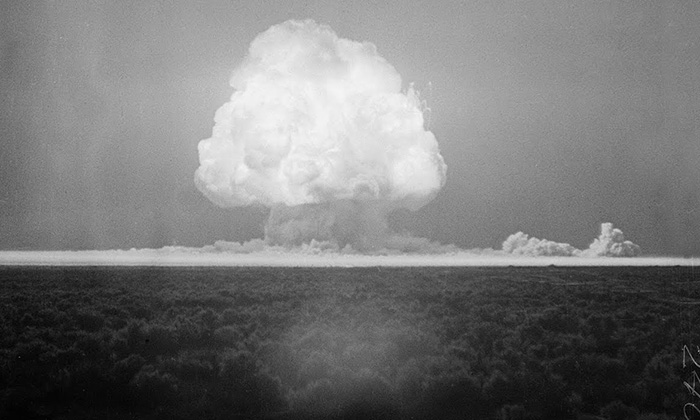
Atomic bombs harness the immense power locked inside the nucleus of atoms to create cataclysmic explosions. But how exactly do these devastating weapons unleash their incredible energy? Let’s break down the underlying nuclear science step-by-step.
Splitting Atoms – Fission
Atoms are made up of neutrons, protons, and electrons. The nuclei of certain large atoms like uranium or plutonium can be “split” by bombarding them with extra neutrons. This process is called nuclear fission.
When a free neutron hits the nucleus of a fissile atom like uranium-235, it splits it into two smaller nuclei, releasing energy and more free neutrons. These neutrons then go on to split other uranium nuclei, creating a self-sustaining chain reaction.
In a nuclear reactor, the fission chain reaction is controlled to harness energy. But in an atomic bomb, it is unchecked, leading to an exponential explosion of fractures splitting atoms at incredible speed.
Critical Mass
To create a nuclear explosion, enough fissile material must be brought together to form a “critical mass.” This is the minimum amount required to sustain a fission chain reaction.
The key challenge of atomic bomb design is rapidly assembling a critical mass before the heat and pressure blows the weapon apart. One technique is to fire one piece of subcritical material into another using chemical explosives.
When enough uranium or plutonium comes together at high speed, the result is a runaway fission chain reaction and a nuclear detonation. In a matter of microseconds, trillions of atoms are split, releasing nuclear energy.
Unleashing the Energy
Each uranium fission releases 200 million eV of energy – over a million times more than a chemical reaction. Just one pound of uranium can release the energy equivalent of 15,000 tons of TNT explosives.
This sudden, massive energy release creates extremely high temperatures and pressures, resulting in an explosive shockwave flattening anything within miles. Blinding thermal radiation also incinerates structures and people.
Additionally, the fission process creates radioactive byproducts that saturate the area with hazardous fallout carried by wind and rain. This radiation can poison populations and environments for years to come.
Harnessing the Power
While the immense power of splitting atoms can lead to utter destruction in atomic bombs, it can also be harnessed for good. Nuclear fission provides 10% of the world’s electricity via controlled chain reactions in nuclear reactors.
So in summary, atomic weapons rapidly create a critical mass of material like uranium, triggering uncontrolled nuclear fission and channeling the tremendous energy release into a cataclysmic explosion. The science behind this immense force is our key to both destroying and improving our world.

Theodore Lee is the editor of Caveman Circus. He strives for self-improvement in all areas of his life, except his candy consumption, where he remains a champion gummy worm enthusiast. When not writing about mindfulness or living in integrity, you can find him hiding giant bags of sour patch kids under the bed.
